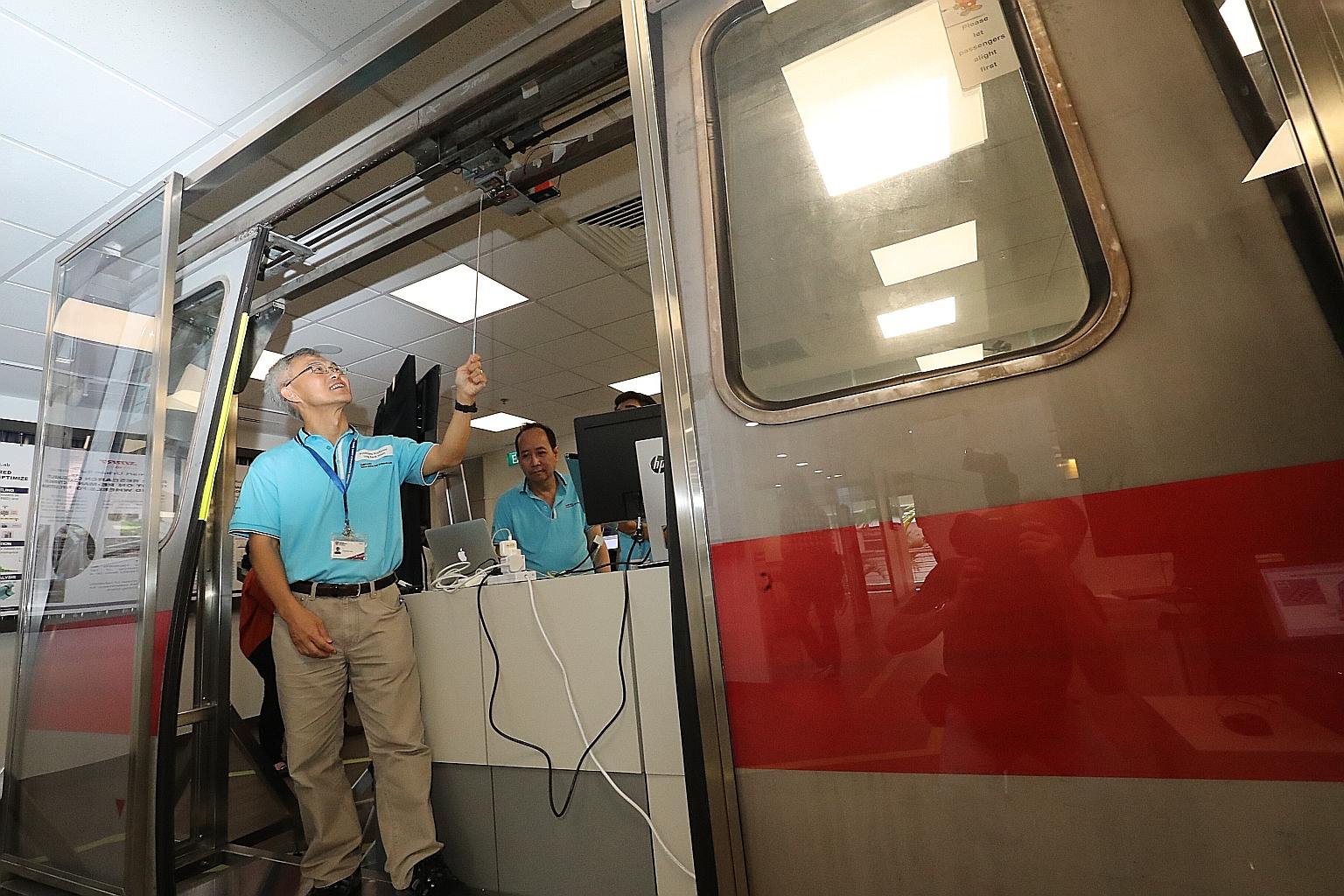Train door sensors may cut delays at MRT stations
Monitoring system is among 13 research projects being conducted at SMRT-NTU lab
Sign up now: Get ST's newsletters delivered to your inbox

Associate Professor Ling Keck Voon from the Nanyang Technological University pointing to a train door sensor system at the SMRT-NTU Smart Urban Rail Corporate Laboratory.
PHOTO: LIANHE ZAOBAO
Adrian Lim
Follow topic:
More than half of MRT delays that last less than five minutes are due to train door faults, causing trains to stay longer at stations before moving off.
But a solution is in the works.
A prototype advanced train door sensor system is being tested on a train to detect issues early for maintenance work to be carried out before faults occur.
This monitoring system collects data on air pressure, movement speed and the power supply of the pneumatic train doors. And the information helps engineers to troubleshoot faults and better predict when failures will occur.
Jointly developed by rail operator SMRT and the Nanyang Technological University (NTU), the system has been fitted, since June, on a set of doors of a train deployed on the North-South and East-West lines.
The advanced system is among 13 research projects the SMRT and NTU are collaborating on at the SMRT-NTU Smart Urban Rail Corporate Laboratory, which is developing monitoring and sensor systems to improve rail reliability.
The lab was officially opened yesterday by Finance Minister Heng Swee Keat, who is also chairman of the National Research Foundation (NRF).
The setting up of the $60 million facility was announced two years ago, with SMRT, NTU and the NRF providing equal funding. There are 70 NTU researchers and 30 SMRT employees working at the lab, one of 12 corporate labs supported by the NRF. Other research areas include advanced robotics, food technology and sustainable urban solutions.
Mr Heng said the SMRT-NTU lab "aims to drive the effective translation of research into solutions that have direct relevance not just to SMRT, but also to the global transport industry in anticipation of future needs". Its opening is timely, he noted. Part of the reason is that Singapore's rail network will double to 360km by 2030.
Also, a strong public transport system is needed to sustain people's support for the Government's push for a car-light society, in which walking, cycling and taking public transport is a way of life, he said.
To meet people's needs, Singapore has to invest in "rail engineering capabilities that are tailored to our needs and conditions", he added. He also said it was necessary "to develop new technologies for an efficient and resilient rail network that can operate at a sustainable life-cycle cost".
The trial of the door sensor system will continue until next month, after which NTU and SMRT will look into installing it on the remaining 47 doors of the train.
Next year, trials for two other projects will kick off. One is a monitoring system mounted on a train that can pick up defects on the power rail and running rails. It does so by using radio frequency technology to monitor the electrical contact between the trains and track.
Trials will start in the first quarter of next year.
The second is a portable robot that can inspect train axles at the depot, and trials will start by the second quarter of next year.
Yet another project is a track-based, laser-cladding repair system, which is expected to be ready for trials by 2020. Laser is used to melt metal powder and to deposit the additive material onto the surface to be repaired, such as a chipped or cracked nose section of a track crossing. This means the entire crossing need not be replaced, and rectifications can be done in one night, instead of three.
SMRT chief executive Neo Kian Hong said as the company strives to improve rail reliability, it will also tap local engineering resources to solve problems that affect its services.

